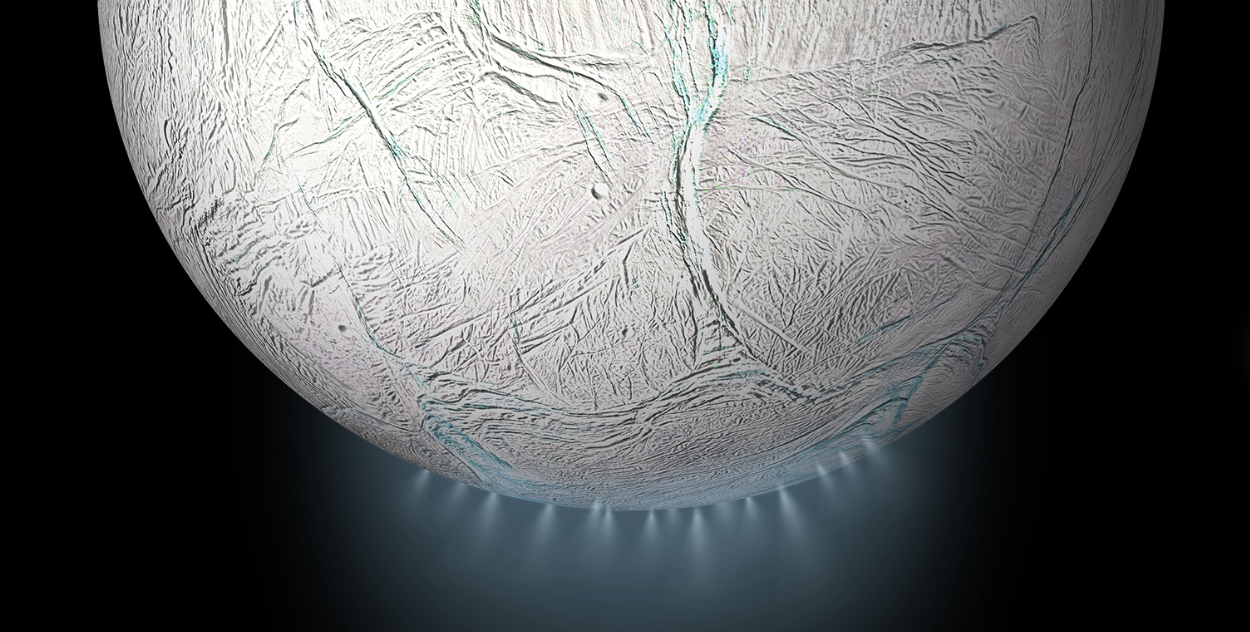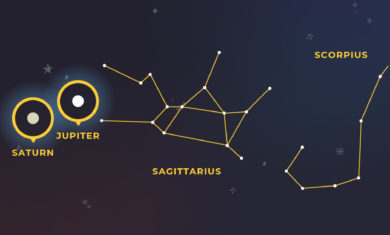AstroFan: Over the Moon for Enceladus

Header Image Caption: An artist’s rendition of Enceladus, Saturn’s 6th largest moon.
Image Credit: NASA/JPL-Caltech
This past weekend, the Adler Planetarium celebrated the 50th anniversary of Apollo 11—a mission that brought us to a whole new world, our Moon.
It’s pretty undeniable that our Moon is spectacular. It’s our only natural satellite, it’s composed of materials that are strikingly similar to Earth, and it’s the only place besides Earth where humans have set foot. BUT, there’s one thing that it lacks that would make it even cooler—ALIEN LIFE.
That’s right! Did you know that planets are not the only celestial bodies where scientists believe life can form? Many astrobiologists (yep, that’s an actual job!) think that some of the moons in our very own Solar System could potentially have alien life.
For this AstroFan, we’re going to be talking about one of my favorite moons that could potentially have alien life, Enceladus!
(image credit: NASA/Cal-tech)
Saturn’s 6th largest moon, Enceladus, has a diameter that is just a little over 300 miles—only 15% the size of our moon.
Don’t let its small size fool you, Enceladus is teeming with activity!
Underneath its thin icy layer lies a vast ocean that covers the entire moon and is on average 6 to 8 times as deep as the average ocean here on Earth!
A phenomenon called tidal heating is the reason for the ocean. Tidal heating is when a satellite orbiting a larger object exhibits orbital energy that is dissipated as heat.
The energy from the rising and falling tides melts the ice below the surface of Enceladus. A good way to think of tidal heating is to imagine a racquetball that is being rapidly squeezed, eventually the racquetball heats up as a result of the continued force!
The ocean that lies beneath Enceladus’ surface often makes itself known via one of its most striking features: the large plumes of water vapor that it spews out from its surface.
In 2015, a NASA probe called Cassini, swept through the orbit of Enceladus. The findings that were made from this were unbelievable.
It turns out that water vapor, ice particles, salts, hydrogen, simple compounds, AND complex compounds can all be found in the plumes of Enceladus!
AKA the basic building components for life!
Although these findings don’t guarantee that there is life on Enceladus, they are nevertheless very promising.
Future missions will be needed to further inspect Saturn’s moon for life—but in the meantime, I bet you’re curious as to what alien life on Enceladus could look like!
It is currently thought that if life were to be found on Enceladus it could resemble an Earth microbe called Methanothermococcus okinawensis. This microorganism is a methanogen, which means it converts molecular hydrogen and carbon dioxide into methane—elements that have all been confirmed to exist on Enceladus.
Although not as immediately captivating as little green men, if microorganisms do exist on Enceladus it would further support the idea that life is indeed a common occurrence in our Universe.
SO, while our Moon is definitely cool in its own right, it’s safe to say that it’s got some steep competition with a very special moon in our very own Solar System.

Stay tuned for more awesome space facts on the next AstroFan.
Thank you for reading!
—Bianca, a.k.a. AstroFan







